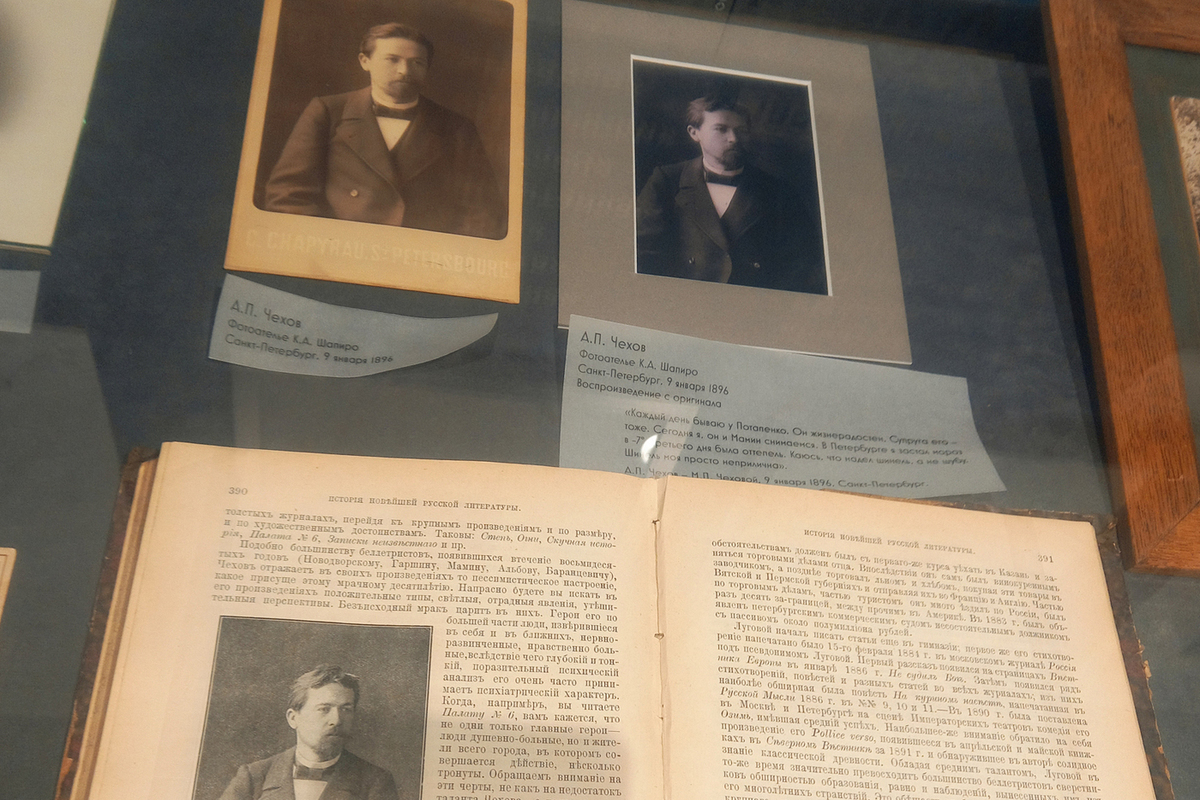Photographs of Chekhov taken by Kuprin and Gilyarovsky were shown in Moscow
[ad_1]

When you come to such exhibitions as the one that opened in the Moscow Chekhov House Museum, you immediately catch yourself thinking that the organizers, on the one hand, did not go too far with “tactility.” On the other hand, they didn’t “kill” the idea with narrow focus, they say, here are a hundred cards from the late 19th – early 20th centuries, they depict a classic, enjoy.
GMIRLI’s new project “I don’t have a better photograph”: A.P. Chekhov through the lens of professional and amateur photographers” the MK correspondent visited on the first of the truly spring days: the mood in the capital, where the air warmed up to plus 20, was truly summer, almost Crimean. I thought about all the good things, although the Yalta dacha was for Anton Pavlovich a hospital sanatorium, and not a place where you spend your vacation. But the photographs from there were made the beginning of a photographic narrative about Anton Pavlovich (Chekhov in the Yalta garden, on the threshold of the “White Dacha”, in the wing of the Yalta house…).
But let’s return to “tactility,” by which I mean demonstrating to the public things that this or that writer directly touched (visitors, of course, are not allowed to do this). A cane, cap, tie and vest that belonged to Chekhov were placed in a separate display case. If you take this fact as a quest, then you should wander past the stands with a magnifying glass, trying to find these things in numerous photographs. A little later in the course of the exhibition you can also see Anton Pavlovich’s pencil, a photo album of his wife Olga Leonardovna Knipper-Chekhova and their family photo shelf, but these are already separate exhibits, lost in the general mass.
Further, in the language of objects, we are told what, in fact, the photographic business was like at the turn of the century before last – here is a device on a tripod, in the “hem” of which the photographer was hiding, various rollers that were used to smooth out finished photographs, and other attributes of simple production. This simplicity, by the way, — very important circumstance.
One of the stores in Moscow dealing in second-hand books, vintage posters, playbills, labels and other non-standard collectibles joked on social networks on April 1 that they had just sold the only photograph of Pushkin during his lifetime. “Experts” immediately rushed into the comments, meticulously explaining the difference between daguerreotype, heliography and “real” photography, the era of which began after the death of the poet (the first self-portraits and portraits in history date back to 1839 and 1840, but there was no need to talk about mass production then).
In any case, a photo of Pushkin does not exist in nature – if you see an image of Alexander Sergeevich’s face in a collection of works, then this is a reproduction of a painting or lithograph. Dot.
In this regard, Chekhov (life 1860–1904) was more fortunate – an activity that was originally the lot of miracle workers in chemical laboratories became publicly available, many amateurs appeared (in one of the stories of the satirist Averchenko, a camera is given to a child for his birthday; what other evidence is needed of accessibility and prevalence ?).
Chekhov, leaving the first impression of a gloomy and arrogant person, according to the memoirs of his contemporary, journalist Mikhail Pervukhin, became rejuvenated and cheerful in the photo salon.
Therefore, there are especially many salon photos – with logos of Yalta, Moscow, St. Petersburg, Taganrog – with Anton Pavlovich. Made in 1896 in St. Petersburg by K.A. Shapiro, the exhibition was shown in an original way: in the top row is the original in a branded frame, to the right of it is a modern, apparently restored reproduction. And below them is a spread of the volume “History of Contemporary Russian Literature” from 1897, illustrated by Shapirov’s masterpiece, which depicts Chekhov exactly as we know him from school textbooks.
You can describe each frame, because together they give a complete picture of the biography of the writer, but, avoiding “spoilers,” I will mention the most interesting ones. These are, of course, early photographs – if you have not seen Chekhov as a 14-year-old teenager and a charming 19-year-old youth, then you definitely need to get to the department of the State Literary Museum on Sadovaya-Kudrinskaya. Also worthy of special attention are the photographs of Chekhov taken by Alexander Kuprin and Vladimir Gilyarovsky (author of the famous everyday life book “Moscow and Muscovites”). Kuprin and Gilyarovsky, by the way, photographed their like-minded person and fellow writer a year before his death. And one of the last shots was taken by S.V. Linden. “A. P. Chekhov at his house in Yalta with his dogs Tuzik and Kashtan,” reads the caption. A man with a slightly bowed head, wearing a coat and hat. Cane in hands. The plants have managed to turn green, the garden watering can behind and the barrel for collecting rainwater – it seems that it is still in its place.
April 18, 1904. Less than three months will pass, and Chekhov will be gone.
[ad_2]
Source link






